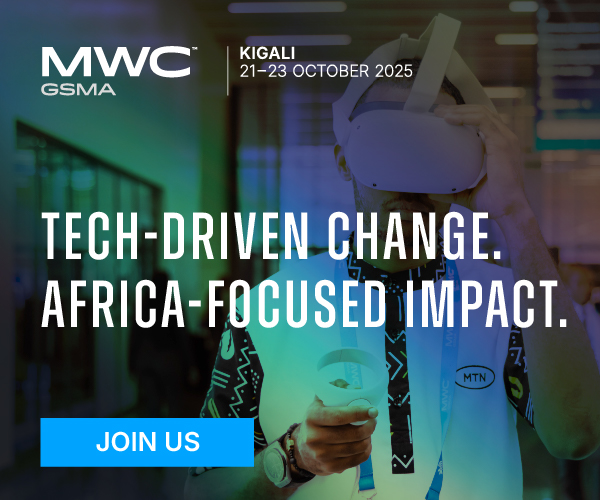Closing the Gaps: Why Interoperability Matters for Africa’s Digital Economy
Africa has set itself an ambitious goal: to build an integrated digital society and economy by 2030. At the centre of this vision lies the ability to trade and transact across borders with minimal friction. Payments are at the core of this transformation, and the Pan-African Payment and Settlement System (PAPSS ), launched in 2022, was designed to provide that foundation.
Backed by Afreximbank and the African Union, PAPSS promised to make cross-border payments faster, cheaper, and more accessible by allowing direct settlement in local currencies. As of August 2025, 18 African countries have joined the Pan-African Payment and Settlement System (PAPSS) network, connecting multiple regions across the continent through their central banks and numerous commercial banks. Transactions could clear in seconds, and the system was built on global standards to ensure reliability and security.
In practice, however, the experience has been less seamless. Many users still struggle to move money easily across borders. Mobile money wallets, which millions rely on daily, remain largely disconnected. As a result, workarounds such as card transfers or manual approvals are still common. This gap between the system’s potential and its current impact highlights one of Africa’s most persistent digital challenges: interoperability.
In this #TechTalk Thursday article, we take a closer look at why interoperability matters to Africa’s digital economy, where the obstacles remain, and what it will take to close the gap.
The Nature of the Interoperability Challenge
Interoperability is not simply a question of technology. In many countries, the infrastructure already exists to process digital payments effectively. The real obstacles lie in how systems, regulations, and markets interact.
Africa’s regulatory environment is fragmented. Each of the continent’s 54 countries applies its own rules for licensing, customer verification, and data protection. Without a common framework, creating a unified payment landscape is extremely difficult. Central bank leaders have acknowledged that harmonisation remains one of the toughest hurdles to overcome.
Currency liquidity also plays a decisive role. A payment system cannot function smoothly if the receiving market does not have sufficient liquidity in the relevant currency. Even the most advanced platforms falter when demand and supply are unbalanced.
Mobile money adds another layer of complexity. There are more than 170 services operating across the continent, but most function as closed systems. Inter-wallet transactions are limited even within national borders, and cross-border transfers are even more restricted. PAPSS connects banks, yet digital wallets—where much of Africa’s financial activity actually occurs—remain poorly integrated.
On top of this, technical and operational challenges continue to slow progress. Legacy infrastructure, uneven connectivity, and the need for compliance checks delay settlements. In some cases, payments are processed in batches rather than in real time, undermining the promise of instant transfers. Many providers also lack clear incentives to invest in integration, especially when revenue-sharing arrangements are uncertain.
Why Closing the Gap Matters
The consequences of this fragmentation are significant. Intra-African trade has remained low, averaging just 15 percent between 2015 and 2019. By comparison, Asia’s trade within the region stood at 58 percent and Europe’s at 68 percent. The African Continental Free Trade Area (AfCFTA) was established to raise Africa’s figure to 50 percent by 2045, but that ambition cannot be met without efficient cross-border payments.
Mobile money has already transformed the financial landscape by bringing millions of unbanked individuals into the formal economy. It has enabled savings, loans, and safer ways of handling money. Yet its transformative potential will not be fully realised until services can connect seamlessly across networks and borders. Interoperability is therefore not a technical luxury; it is central to Africa’s economic growth and financial inclusion.
“Enhanced interoperability not only fosters the flow of digital assets within payment ecosystems but also aligns with governmental goals for cashless economies, offering numerous advantages to users, ranging from greater convenience to positive socioeconomic outcomes.”
– Ashley Olson Onyango, Head of Financial Inclusion and AgriTech, GSMA’s Mobile for Development
What Will Make the Difference
Progress will depend on coordination between regulators, banks, fintechs, and international partners. Regulatory harmonisation is the first step. Aligning standards for customer verification, data protection, and licensing will create the foundation for cross-border trust.
Equally important is the adoption of shared technical standards. Open APIs and common protocols will help to break down the silos between mobile money platforms and banks. Countries such as Ghana have already demonstrated what is possible when regulators take the lead in enforcing interoperability, creating systems that connect wallets, bank accounts, and national switches.
The private sector must also see a clear incentive to participate. Without viable business models for interoperability, investment will remain limited. Regulatory sandboxes in countries such as Sierra Leone and Eswatini show how innovation can be supported while maintaining oversight. Partnerships with international institutions, particularly those with experience in building digital public infrastructure, can also provide valuable support and expertise.
The Road Ahead
PAPSS has laid important groundwork for a more connected Africa, but its current reach is incomplete. Without the active participation of mobile money providers and wallet operators, its impact will remain limited. The stakes are high: in 2022, remittance inflows to Africa reached $100.1 billion, with $19.4 billion flowing within the continent. Streamlined payment systems could unlock enormous value for individuals, businesses, and governments alike.
Africa has built strong national payment systems. The challenge now is to connect them. If stakeholders can close the interoperability gap, the continent will move closer to its goal of an inclusive digital economy. The prize is clear: greater financial inclusion, lower transaction costs, and a significant boost to intra-African trade.
“Now, Africa is leading in digital payments and also boasts the largest free trade area. This dual progress is critical. Harmonization across different countries is essential and will naturally happen through the implementation of binding protocols under the AfCFTA. This will ensure that every trader can thrive in this market, facilitating seamless trade for a market of 1.4 billion people.”
— Jean Pascal Mvondo, Regional Lead for Francophone Africa and the Middle East, UN Better Than Cash Alliance
Interoperability is not a secondary issue. It is the missing link in Africa’s digital transformation. Closing this gap will determine whether the continent’s digital ambitions remain aspirations or become a lived reality.






